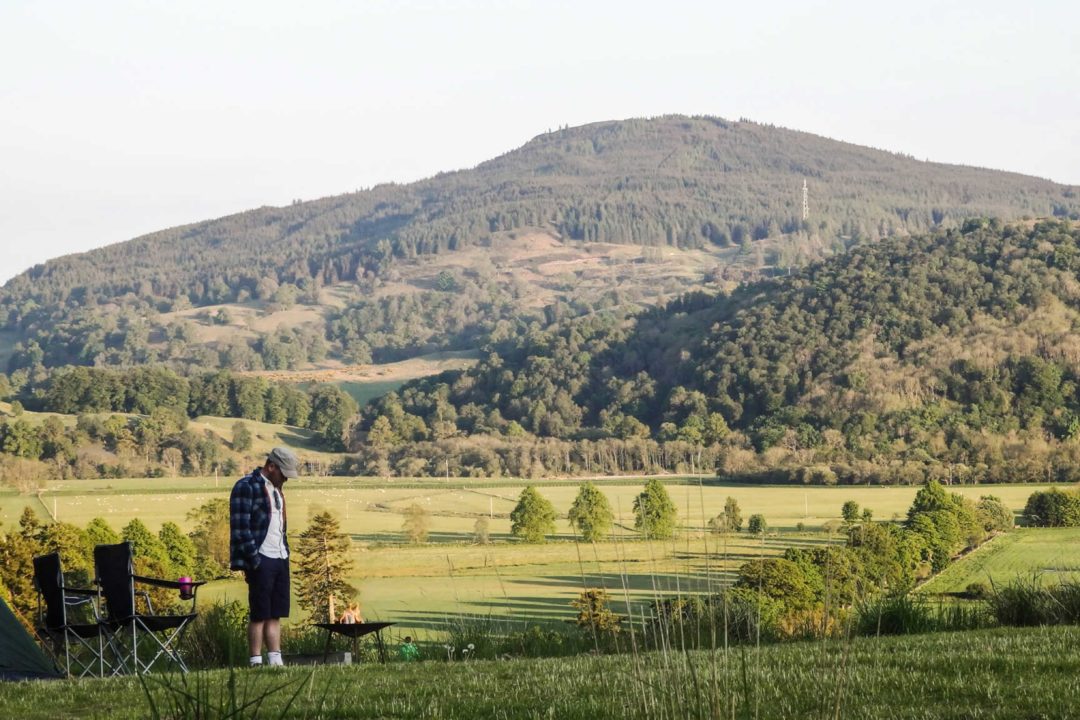Ah, Scotland. Stunning landscapes, thousands of lochs, and the kind of wild that clears your head – and midges.
Yes, Scotland’s tiny, bitey nuisances that have a knack for appearing just as you settle in with a view. But don’t worry, you don’t need to stay indoors or cancel that camping trip.
With a few tricks and a bit of know-how, you can keep exploring and stay (mostly) midge-free. Here’s how to survive Scotland’s midges.

What are Scotland’s midges, anyway?
Midges are tiny flying insects, like miniature mosquitoes, and they love Scotland’s damp, changeable climate.
While midges are not dangerous, they are very annoying in large numbers and can leave behind small itchy bites. Only the female midges bite – but there are a lot of them.
Midges are attracted to the oxygen you breathe out, so they are hard to avoid.
Your Scottish Midge survival kit
Pack a midge repellent
- Smidge – Hands down the best midge repellent out there and is DEET free. Designed for Scotland, it contains picaridin and works a treat. You’ll spot it in most shops across the country.
- Avon Skin So Soft Original Dry Oil Body Spray – A cult favourite. Not a repellent, but it seems to put them off biting. Worth packing just in case.
- Deet based repellents – for those who are allergic to biting insects (like I am) a repellent like Jungle Formula with DEET might be your only option.
- The Smoking Midge – one for your campsite, the Smoking Midge are small cones which you light to disguise the 02 from your breath. You could also try the The Wee Midgie Lavender & Bog Myrtle Candle Tin.
- US based? Try Sawyer’s insect repellent which also contains picaridin like Smidge.
Midge repellent clothes
- Get a Midge net – yes, you’ll look a bit silly, but if you’re camping or standing still for long, it’s a game-changer.
- Long sleeves and light layers – Midges can’t bite through tight-weave fabrics. Cover up and go for light colours — it could be a myth, but it is thought that pale colours are less attractive to the little beasties.
- You could try clothing treated to protect you against biting insects like NoiLife from Craghoppers.
Treating midge bites
Midge bites look like small red dots – and they are incredibly itchy. They usually apear a day after you have been been bitten. If you do get bitten then try:
- Anti-histamines – look for over the counter anti-histamines which contain cetirizine such as Piriteze – antihistamines aren’t just for treating hayfever!
- An insect bite cream – I swear by Eurax bite cream to treat my insect bites.
When do you find Scotland’s midges?
Planning your trip? You will find midges in Scotland between late May and early September.
There are usually two midge seasons in Scotland – at the start of May and at the start of August, but hot weather can bring them out sooner.
Midges tend to come out in full force at dawn and dusk, just when you want to have a morning coffee or that golden-hour sun-downer drink. But the good news? They hate wind, sun, and dry weather.
Use the Scottish Midge Forecast before heading out, it’s surprisingly accurate and can help you plan your days better.
Thankfully midges can stand a breeze over 6 miles an hour, so search out breezy spots.
Where are smidges in Scotland worst?
Expect to find midges on calm, humid days in the Highlands and west coast.
They also like Scotland’s boggy, peaty wet ground the most.
The worst places for midges in Scotland include
- The west coast and West Highlands
- The Cairngorms
- Loch Lomond & The Trossachs
- Highland Perthshire
- Isle of Skye
You can avoid the dreaded Scottish midge by heading to the south and the east coast of Scotland, so why not visit
Midges and camping and hiking
- Choose your camping pitch carefully – Avoid sheltered, wooded spots near water. High, exposed ground is best.
- Catch the breeze – A 6mph wind is enough to keep midges grounded. Lucky for us, Scotland does wind well.
- Plan your day – Midges are sleepiest in full sun, and most active at dawn and dusk.
- Keep moving – They’re lazy flyers. Walk, cycle, paddle — don’t stop too long and you’ll mostly outrun them.
- Climb a Munro – it is unlikely your will find Scottish midges up a mountain – so why not bag a munro?
- Try a fire – A bit of smoke helps keep the midges away from your tent or picnic table. Follow the Scottish Outdoor Access Code and fire-risk warnings before you light a fire, why not carry a portable fire pit?
Love from Scotland x
